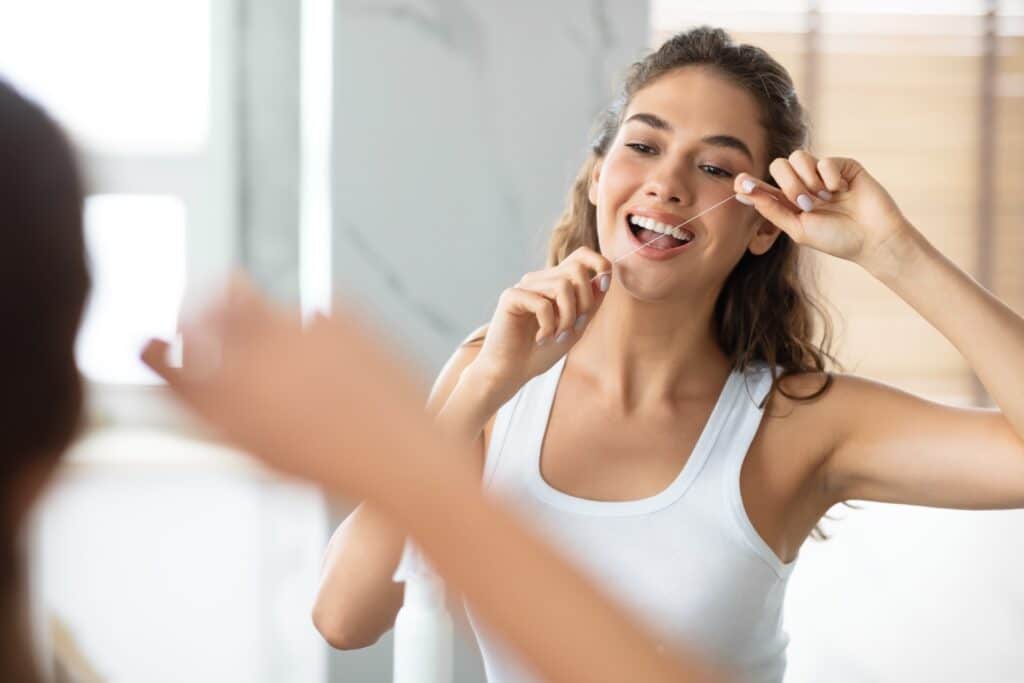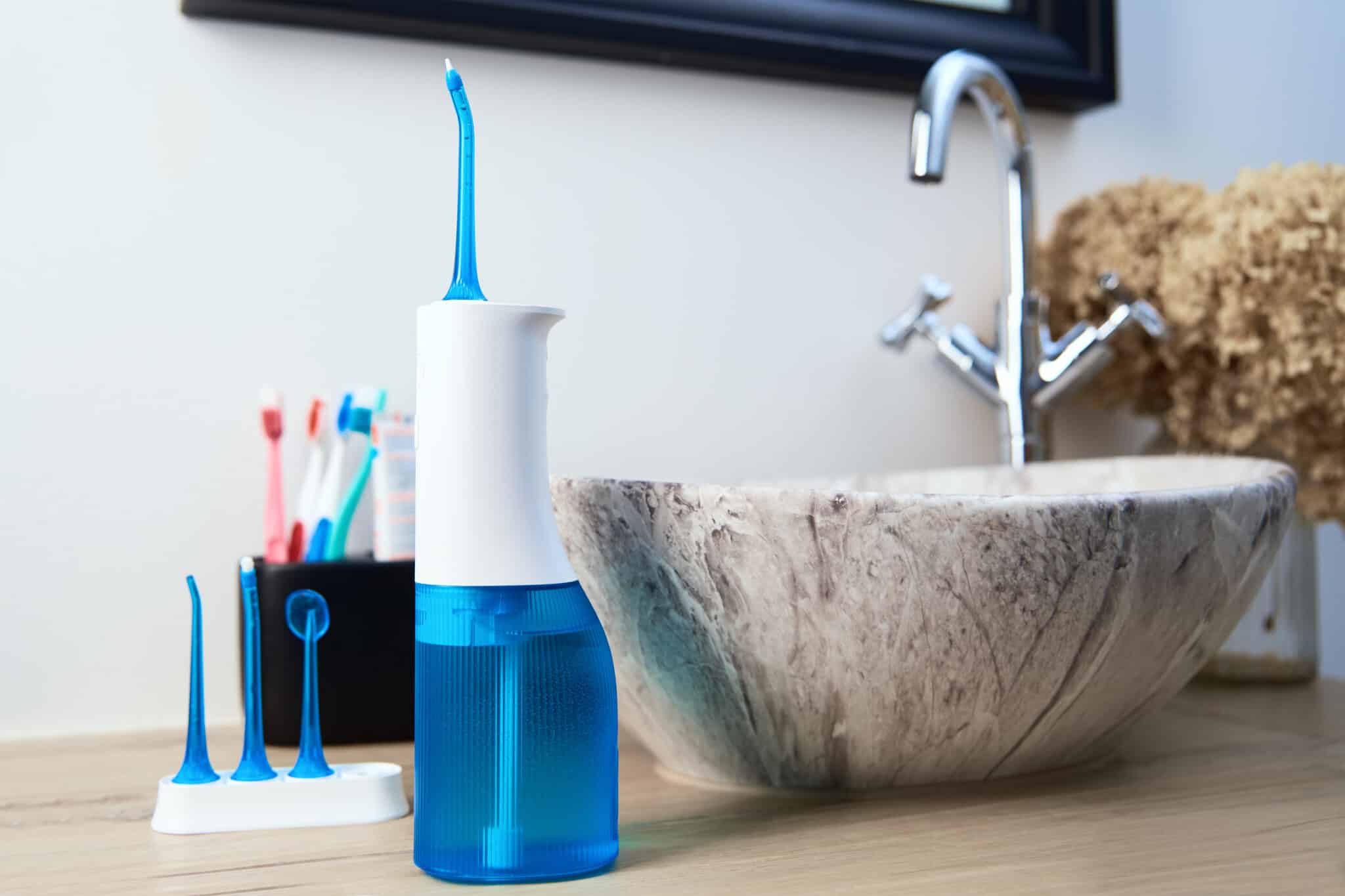Flossing with braces is just as important as flossing without braces. But all those brackets and wires in the way may make flossing seem impossible.
Rest assured, flossing with braces isn’t as difficult as it seems, especially if you have the right tools. Once you learn how to floss with braces, you’ll find the task nearly as simple as flossing without them.
Ohana Orthodontics has some tips on how to use floss with braces, as well as how to use a water flosser and which is better in the Waterpik vs. flossing debate.
The Importance of Flossing With Braces
Many people think brushing their teeth is enough to keep them clean and healthy. But flossing teeth cleans up to 35% of your tooth’s surface. That’s more than a third of your tooth left dirty without flossing!
The small spaces between teeth allow plaque to build up and harden. That hardened plaque — called tartar — can trap bacteria against your teeth and gums. This bacteria can cause tooth decay and gum disease.
Discolored teeth and bleeding gums are the early signs of tooth decay and gum disease. Left untreated, both can eventually lead to tooth loss. Plaque and tartar can also cause bad breath and infections in the gums or teeth.
Flossing isn’t just important for your oral health. It’s important for your overall health, preventing infections and allowing you to better chew your food. This ensures proper digestion and nutrition, which mean better health.
The Challenge of Flossing With Braces
Do you know how to properly floss your teeth with braces? It’s easy enough to run dental floss between teeth without braces, but how do you get around braces brackets and wires?
You might think flossing with braces isn’t worth the worry, or that a water flosser such as a Waterpik is better than flossing. The truth is that using dental floss with braces is vital to your oral health.
It may seem challenging to floss with braces, but using the right tools can help. One of the best tools is a floss threader.
How to Floss With Braces Using Threaders
The best way to floss your teeth is with dental floss, and the best way to use dental floss with braces is to use a floss threader. This looks like a long, thin, plastic needle with an extra large eye.
To use a floss threader with braces:
- Thread the floss through the threader eye or tie it to the eye
- Slide the floss threader over or under the archwire
- For upper teeth, thread downward to avoid poking gums
- For lower teeth, thread upward to avoid poking gums
- Slide the dental floss through the teeth as normal and floss above and below the gumline
You can use regular dental floss with a floss threader, including waxed floss. Waxed floss moves more smoothly through teeth.
Make sure you use a long enough piece of floss, because the dental floss may get snagged on the brackets and fray, so you may go through a small piece quickly.
Some floss threaders actually come with the dental floss already attached. Instead of looking like a needle, the floss threader is a thin piece of plastic attached to the end of a long piece of dental floss.
Whichever floss threader you use, make sure you use it at least once a day before brushing to ensure your teeth stay clean and healthy.

Using a Water Flosser
Do you know how to floss with braces without a threader? If you don’t have a threader, a water flosser such as the popular Waterpik can remove at least some of the plaque and food particles from between your teeth.
Does a Waterpik replace flossing? There are a lot of water flosser benefits. Water flossers can help remove plaque and food particles from between your teeth. They can even remove plaque and food particles from around your braces brackets. But is a Waterpik better than flossing?
As great as water flossers are, they don’t have the scrubbing power of dental floss. As a result, they may leave a thin film of plaque between your teeth. Water flossers are great to use IN ADDITION to dental floss, but they should never be used as substitutions.
Rinsing Your Mouth and Braces After Meals
Rinsing your mouth between flossing and water flossing can help remove plaque and food particles, making it easier to clean your teeth when you brush and floss.
Use tap water to rinse your mouth after meals or snacks if you can’t brush. Most municipal tap water has fluoride in it, which strengthens your enamel.
Rinsing with tap water after meals can help keep your teeth and braces cleaner between brushings and flossing, which means a more successful orthodontic treatment.
Using Mouthwash After Flossing and Brushing
Mouthwash after brushing and flossing can also help keep your teeth clean. Not all mouthwash has fluoride in it, but most mouthwashes have antibacterial properties. They will kill the bacteria that causes tooth decay and gum disease.
Wait at least half an hour after brushing and flossing to use mouthwash with braces. This gives fluoride in the toothpaste time to become fully effective at strengthening your tooth’s enamel. After using the mouthwash, wait another half an hour for the mouthwash to work, especially if it does have fluoride in it.
Mouthwash is just as effective between teeth as it is on the rest of the surfaces, so be sure to swish it around well and “pull” it between your front teeth without swallowing it. Mouthwash can help boost the cleaning power of your dental floss and toothbrush.
Getting a Professional Cleaning
You may think that because you visit us so often that you don’t need to visit your dentist. Nothing could be further from the truth! Your dentist will provide a thorough dental cleaning even with your braces.
Your dentist will also examine your teeth and can spot any possible problems, such as possible demineralization or tooth decay. This needs to be caught as quickly as possible. Demineralization can leave white spots on teeth after braces.
Tooth decay can cause cavities that have to be filled right away. Depending on the location, we may have to remove part of your braces so that your dentist can fill the cavity. This can delay your braces treatment.
Your dentist will check between your teeth and give you a professional flossing, too. This will keep your orthodontic treatment on track and your teeth healthy.
Oral Hygiene and Braces Treatment in Canby, OR
Braces treatment can make a beautiful smile, but only if you do your part to keep your teeth clean and your gums healthy. Flossing properly with braces is one of the best ways to do this.
If you have trouble brushing and flossing with braces, Ohana Orthodontics is here to help! Schedule an appointment with Ohana Orthodontics in Canby, OR, and we can help you find the best solutions for a beautiful smile!





